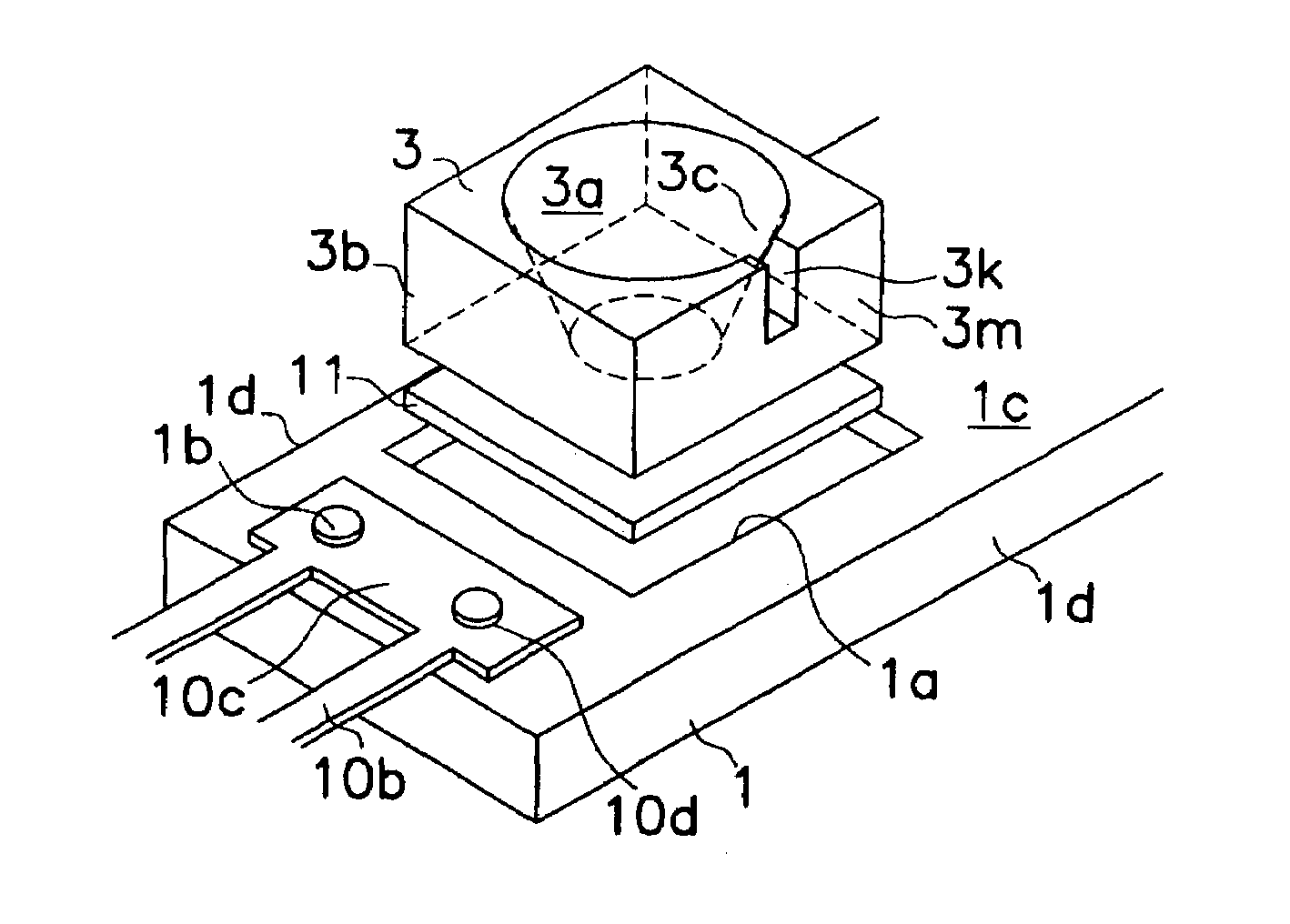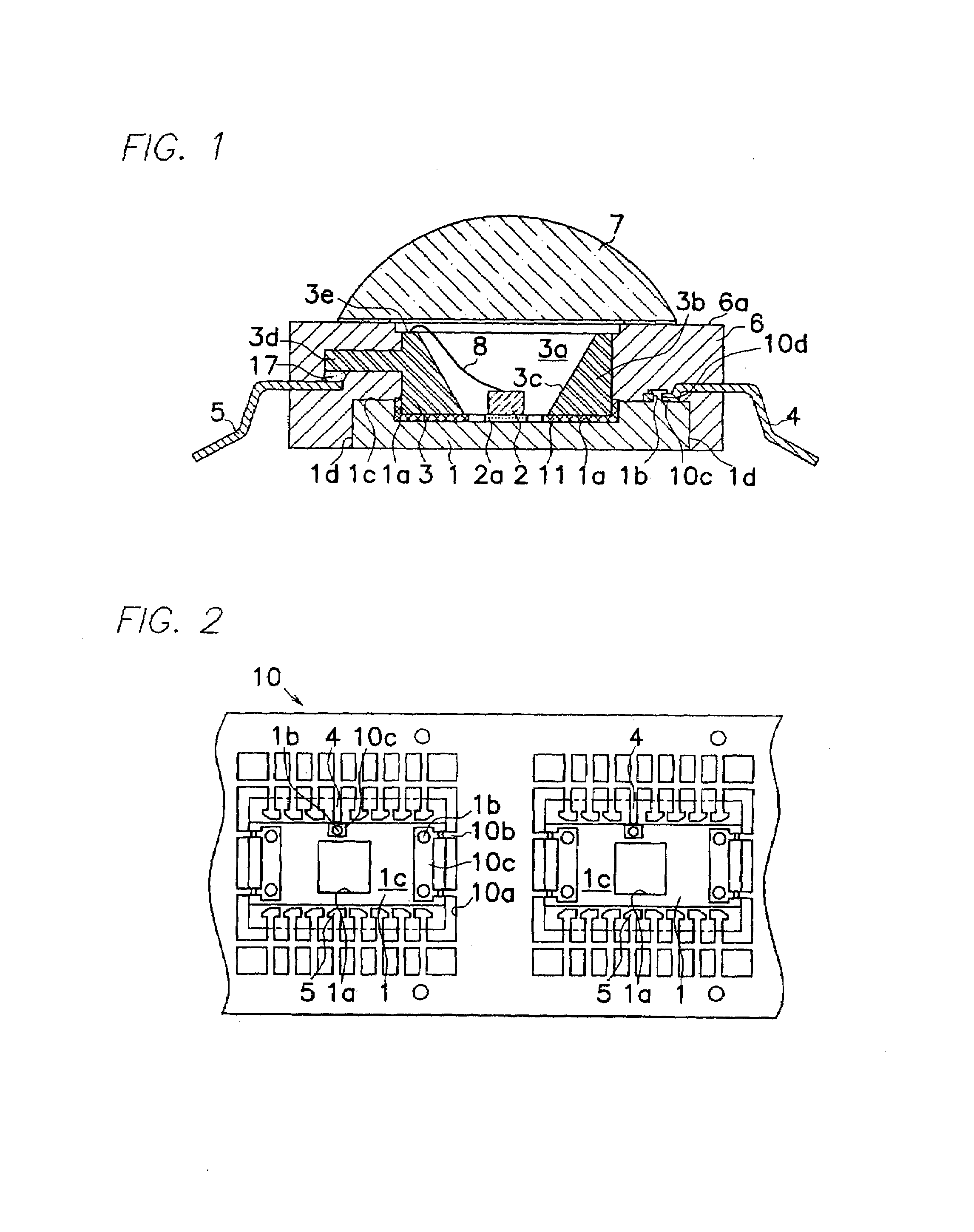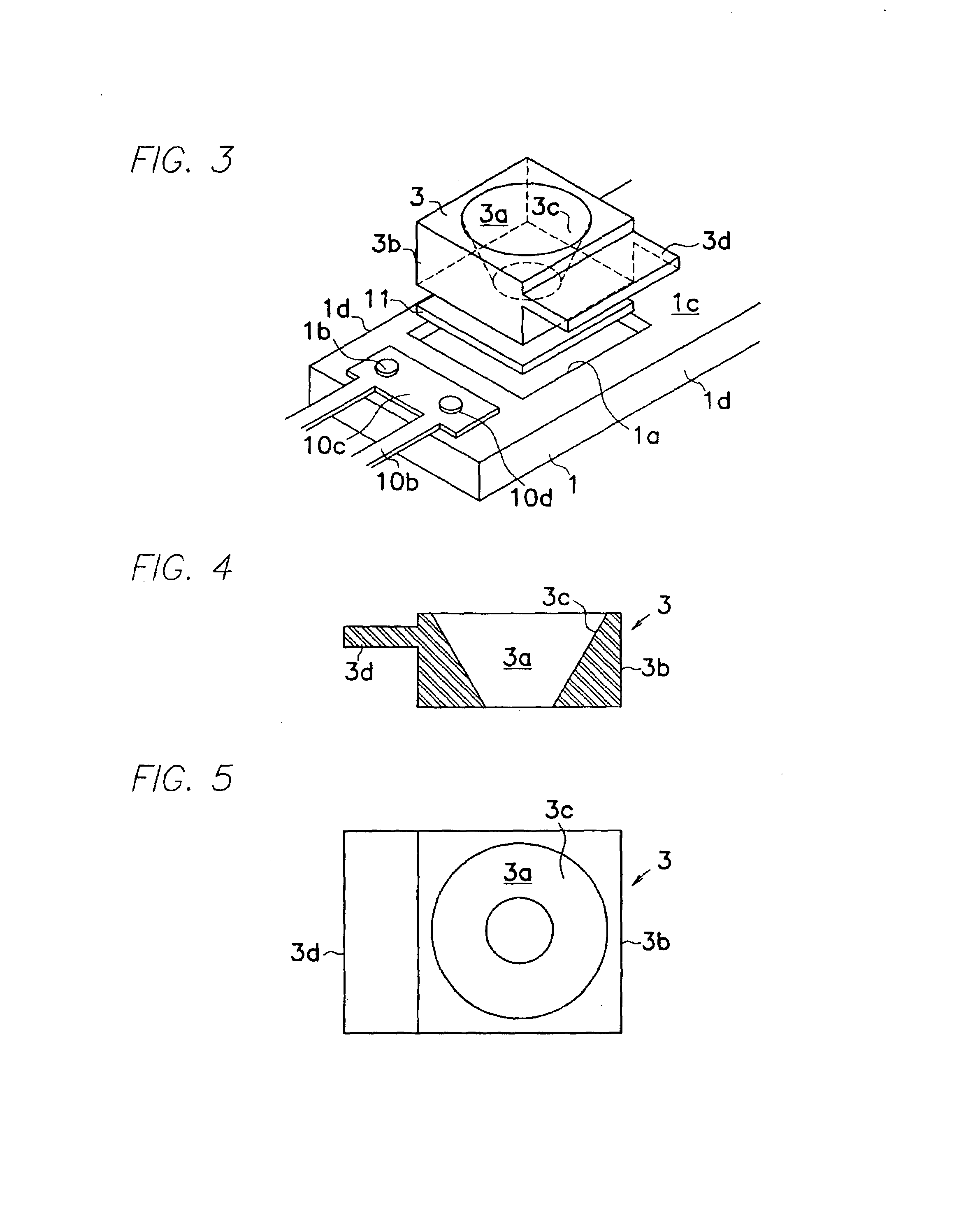Semiconductor light emitting device capable of increasing its brightness
a technology of semiconductor light and light emitting device, which is applied in the direction of semiconductor devices, basic electric elements, electrical appliances, etc., can solve the problems of inconvenient heat generation of plastic encapsulants by heat from semiconductors, semiconductor devices deteriorating electrical properties, and resin deterioration under heat, so as to facilitate molding operation, improve reliability of semiconductor light emitting devices, easy and shorten wiring
- Summary
- Abstract
- Description
- Claims
- Application Information
AI Technical Summary
Benefits of technology
Problems solved by technology
Method used
Image
Examples
Embodiment Construction
[0059]A semiconductor light emitting device shown in FIG. 1 comprises a metallic support plate 1 formed with a recess 1a; a light-reflective reflector 3 mounted in recess la of support plate 1 in electrically insulating relation to support plate 1, and formed with a hole 3a upwardly expanding; a light emitting diode 2 mounted on recess la of support plate 1 within hole 3a of reflector 3, one electrode (a bottom electrode) of the light emitting diode 2 being electrically connected to support plate 1; a first wiring conductor 4 electrically connected to support plate 1; a second wiring conductor 5 electrically connected to the other electrode (a top electrode) of light emitting diode 2; a lead wire 8 for electrically connecting light emitting diode 2 and reflector 3; a heat-resistible plastic encapsulant 6 for encapsulating outer periphery of reflector 3, upper and side surfaces 1c, 1d of support plate 1, each inner end of first and second wiring conductors 4, 5; and a lens 7 for cove...
PUM
 Login to View More
Login to View More Abstract
Description
Claims
Application Information
 Login to View More
Login to View More - R&D
- Intellectual Property
- Life Sciences
- Materials
- Tech Scout
- Unparalleled Data Quality
- Higher Quality Content
- 60% Fewer Hallucinations
Browse by: Latest US Patents, China's latest patents, Technical Efficacy Thesaurus, Application Domain, Technology Topic, Popular Technical Reports.
© 2025 PatSnap. All rights reserved.Legal|Privacy policy|Modern Slavery Act Transparency Statement|Sitemap|About US| Contact US: help@patsnap.com



